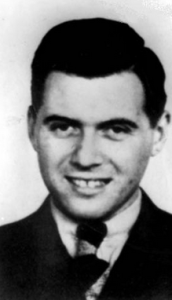Josef Mengele
Josef Mengele, informally known as the Angel of Death, achieved notoriety as an SS officer and physician at Auschwitz, a Nazi concentration camp in Poland, where he reportedly subjected about 400,000 victims to grotesque medical experiments and death in gas chambers. At the end of World War II he was captured by the Allies but managed to escape to South America.
In 1979, a man known as Wolfgang Gerhand drowned in the sea in Brazil and was buried under this name. However there were questions over the true identity of the deceased, with some believing he was actually the escaped physician Josef Mengele. In 1985 a collection of documents had been seized during a raid, some of which referenced a grave in Embu das Artes, Brazil.
The skeletonised remains of the drowned man were exhumed and subjected to recent DNA fingerprinting techniques using PCR and microsatellites or Short Tandem Repeats (STRs). Obtaining DNA was not a simple process, as the remains were badly degraded. However the use of PCR to amplify STRs provided the advantage of permitting small amounts of degraded DNA to be extracted from the shaft of a femur, allowing for a DNA fingerprint to be produced. Blood samples were collected from Mengele’s wife and son, who were still alive and living in Germany, to use as reference, and it was concluded with 99.9% certainty that the body was in fact that of war criminal Josef Mengele. The bones have since been held at the Sao Paulo Institute for Forensic Medicine after the family refused to accept the remains.
Jeffreys, A J. Allen, M J. Hagelberg, E. Sonnberg, A. Identification of the Skeletal Remains of Josef Mengele by DNA Analysis. For Sci Int. 1992, 56(1), 65-76.

